How legal practice analytics can benefit your firm
Law firm data insights and analytics can help your team:
- Win new business through more targeted business development efforts.
- Manage resources and costs more effectively.
- Increase employee and lawyer productivity rates.
- Foster more profitability.
Through data analytics, firm leaders gain enhanced visibility into operations using objective data that identifies trends related to service areas, clients and cases. Analyzing firm data also leads to competitive advantages that empower your firm to identify its best-performing areas and where it can expand its strengths.
Data-driven insights point to better business models for the firm
Practice management software houses all your firm’s business intelligence and financial data. According to the LexisNexis 2020 survey, the top three most important uses of data analytics in the legal industry are:
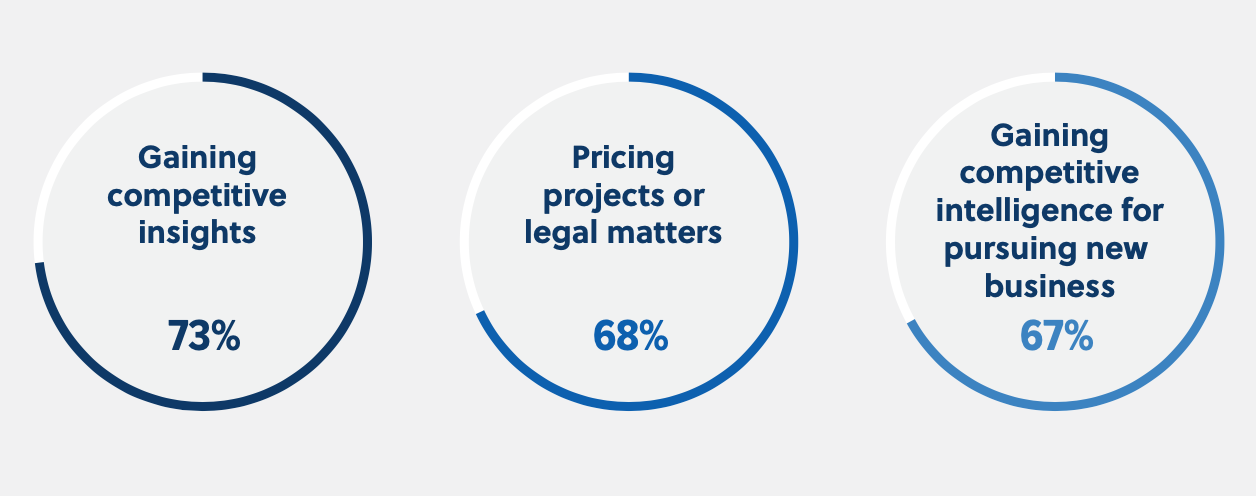
Identify your firm’s key performance indicators (KPIs)
Before you can really put your law firm’s data analytics to use, it’s important to identify key performance indicators and set goals around them. For example, gross revenue is an important indicator of firm health, and you can gain competitive insights by comparing yearly revenue amounts. Breaking down revenue into categories, such as revenue by lawyer and by department, can reveal your top performers and which departments or lawyers need help to improve.
Data analytics will allow you to find the right balance in providing clients with flexible pricing options while still protecting firm profitability. Analyzing bill collections and profitability rates can help you determine when to charge hourly billable rates and when to offer alternative options, such as flat fees or capped and blended rates. You’ll also be able to determine which services are most profitable, assess client retention rates and determine the cost of acquiring a new client to make more informed business development decisions.
Analyze law firm data to assess lawyer productivity and performance rates
In 2020, most firms (84%) report having underperforming lawyers. In nearly a quarter of all firms, more than 10% of lawyers are considered underperformers. Law firm data analytics enable you to identify which lawyers are your stars and which need help to work more productively.
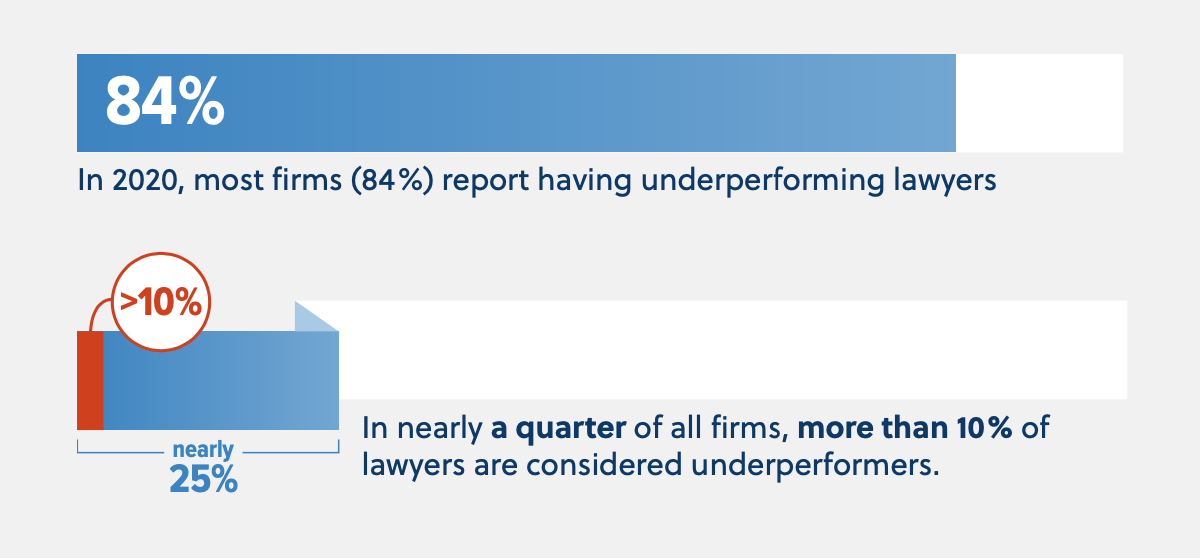
Attorney fees, realization and utilization rates, billable hours and leverage rates are traditional metrics that help assess lawyer productivity and performance levels. Using an all-in-one legal practice management software with built-in accounting enables you to capture even more critical data. You can dig deeper and discover additional insights, such as profit-per-share of practice managed, the total profit of work originated or managed, and costs of work originated or managed. A deeper dive into your legal practice data leads to greater transparency and insight. Firm leaders get a more detailed and holistic view of individual attorney metrics to make more informed decisions about compensation and performance initiatives.
Determine the profitability of each practice area
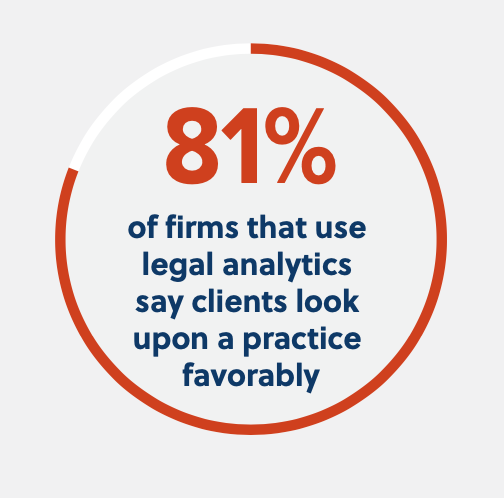 Analyze and rank practice areas based on revenue and cost analyses. Careful consideration of the fees and costs billed and those collected will help you determine which practice areas generate the most profit. The insights you uncover can shine like a north star, always directing firm leaders where to concentrate their efforts for driving more business and profitability.
Analyze and rank practice areas based on revenue and cost analyses. Careful consideration of the fees and costs billed and those collected will help you determine which practice areas generate the most profit. The insights you uncover can shine like a north star, always directing firm leaders where to concentrate their efforts for driving more business and profitability.
Another useful metric is outstanding fees by practice area. Uncollected fees can indicate clients are pushing back on invoices. You may find manual billing practices at the root of many uncollected fees, such as invoice rejections due to failure to comply with outside counsel guidelines. In particularly technology-driven practice areas, sending paper invoices and demanding paper checks can significantly delay payments when clients expect electronic billing and payment options.
Determine where new business originates
What amount and types of business are generated by direct referrals? Who’s doing the referring?
Your firm may receive referrals through word-of-mouth, the local bar association or other marketing endeavors. You want to know what works best so you can double down on successful efforts.
Clients are attracted to firms in other ways, as well. Does your website pull in new clients? What about hosting events and speaking at conferences? Customizing and digitizing your firm’s intake procedures allow you to track origination metrics on a much larger scale more accurately. You will uncover what works best to bring in new work and what doesn’t. These are relatively simple metrics to track that can vastly improve your firm’s business development and marketing efforts.
Understand the efficiency of employees and attorneys working from home
Remote work is top of mind for law firms today. Before the coronavirus pandemic, 17% of U.S. employees worked from home five+ days per week. That number jumped to 44% during the pandemic. In the legal industry specifically, a whopping 76% of U.S. lawyers favored the remote-work option, whereas only 37% were interested in working remotely prior to the pandemic.
With remote work likely becoming a permanent option for many firms, deci- sion-makers will want to understand the costs associated with managing employees who work from home. How do those numbers compare to managing employees in the office? Where are employees most productive? Do billable hours increase when lawyers work remotely? Which technology tools boost efficiency rates?
Analyzing your firm’s data will answer these questions and more to ensure you know how best to ensure your fee earners remain productive wherever they work.
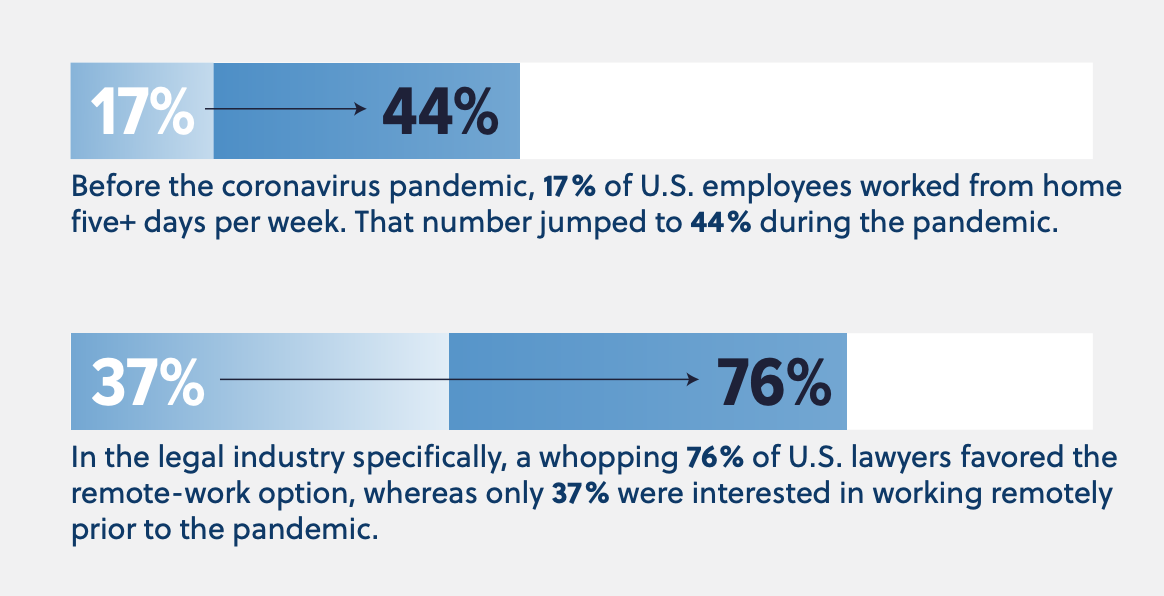
Visual dashboards with accessible data enable leaders to make more informed decisions faster
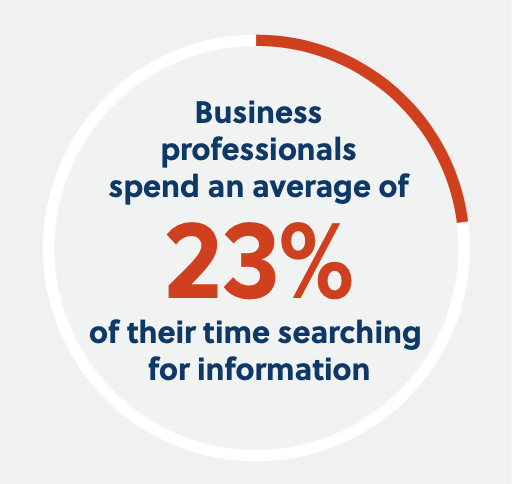 We all know what a hassle it is to search through stacks of paper and rows of spreadsheet data to find that number you need. Even computerized search methods (Google-like searches within a company’s systems) still keep business professionals spending an average of 23% of their time searching for information.
We all know what a hassle it is to search through stacks of paper and rows of spreadsheet data to find that number you need. Even computerized search methods (Google-like searches within a company’s systems) still keep business professionals spending an average of 23% of their time searching for information.
Now, easy-to-use software dashboards give decision-makers real-time access to the most recent data. You can click on a metric to quickly understand more about the factors that make up a metric. Data visualization techniques, such as charts and graphs reveal trends and outliers in an instant (goodbye spreadsheets). Readily accessible data leads to faster, more informed decisions. With practice management solutions, such as AbacusLaw, it becomes quick and easy to pinpoint answers, including where to focus on cutting costs and how to increase profitability.
Data analytics can help determine the efficacy of your firm’s marketing efforts
Data analytics can help law firms track the performance of their marketing campaigns. This might help your firm determine where to target new business opportunities, understand your firm’s market position and identify which marketing resources are most effective.
You can automate marketing activities by scheduling the release of social media posts, company newsletters and interpersonal emails for a specific day and time. The firm will increase its marketing reach while your marketing specialists take back their time to devote to other valuable growth opportunities. Allow attorneys to reclaim their time, as well, by creating marketing outreach templates for their individual use.
Amplify your firm’s growth potential
Law firm data analytics provide a straightforward way to identify patterns and trends that pinpoint when and where growth occurs in your firm and where concentrated efforts will optimize additional potential. Deeper insights make it easier to increase profitability, lower costs and win more clients through targeted business development efforts. By investing in data analytics for lawyers, your firm can seize previously unearthed opportunities and amplify its growth potential.